Secrets to Safe Online Shopping
In today's digital age, online shopping has become a staple in our lives, offering convenience and a wide variety of products at our fingertips. However, with this convenience comes the responsibility of ensuring a secure online shopping experience. It's essential to navigate the vast online marketplace with caution, as not all websites are created equal. This article explores essential tips and strategies for ensuring a secure online shopping experience, covering everything from identifying trustworthy websites to protecting personal information during transactions. So, buckle up as we delve into the world of safe online shopping!
Recognizing secure websites is crucial for safe online shopping. When you visit an online store, always look for the HTTPS in the URL, which indicates that the site is using a secure protocol to encrypt your data. The "S" in HTTPS stands for secure, and it means that your personal information, such as credit card details and addresses, is being transmitted safely. Additionally, look for a small padlock icon in the address bar; this is another indicator that the website is secure. If you encounter a site without HTTPS or the padlock, consider it a red flag and move on to a more secure option.
Not all online retailers are trustworthy, and it's vital to do your homework before making a purchase. Start by researching the retailer; check their website for contact information, return policies, and customer service options. A reputable retailer will provide clear information and easy ways to reach them. You can also check online reviews and ratings to gauge the experiences of previous customers. Remember, if a deal seems too good to be true, it probably is!
Customer reviews can provide valuable insights into a retailer's reliability. When evaluating reviews, look for patterns in feedback. For instance, if multiple customers mention issues with shipping or product quality, it's wise to take those comments seriously. Don’t just rely on the star ratings; read the actual reviews to understand the full picture. A retailer with a high number of positive reviews is generally a safer choice. However, always remain skeptical and use your judgment when interpreting feedback.
It's important to differentiate between genuine and fake reviews. Fake reviews can mislead shoppers and create a false sense of security. To spot suspicious reviews, look for the following signs:
- Overly positive language: If every review sounds like an advertisement, it might be fake.
- Sparse detail: Genuine reviews often include specific details about the product and the shopping experience.
- Review patterns: If a product has a sudden influx of positive reviews in a short time, it may be manipulated.
By being vigilant, you can avoid falling for these traps and make informed decisions.
Review aggregators compile customer feedback from various sources, providing a comprehensive view of a retailer's reputation. Websites like Trustpilot and SiteJabber can be invaluable resources when researching online retailers. They offer a collection of reviews and ratings that can help you gauge the overall sentiment towards a retailer. By utilizing these platforms, you can make a more informed choice and shop with greater confidence.
Understanding payment security is vital for online transactions. When it comes to paying for your purchases, opt for secure payment methods like credit cards or reputable payment services like PayPal. These methods often offer added layers of protection against fraud. Additionally, never save your payment information on websites unless you trust them completely. Keeping your financial details secure is paramount to a safe shopping experience.
Keeping your personal information secure is essential. Always use strong, unique passwords for your online accounts, and consider using a password manager to keep track of them. Avoid using public Wi-Fi networks during transactions, as they can be less secure and expose your data to potential hackers. If you must use public Wi-Fi, ensure you’re connected to a Virtual Private Network (VPN) to encrypt your connection.
VPNs can enhance your online security by encrypting your internet connection, making it much harder for anyone to intercept your data. Setting up a VPN is relatively simple and can be done in a few steps:
1. Choose a reputable VPN service. 2. Download and install the VPN application on your device. 3. Connect to a secure server before starting your online shopping.
Using a VPN not only protects your personal information but also allows you to shop from different regions, potentially unlocking better deals. It's a win-win!
Regularly checking your bank statements helps detect unauthorized transactions. It's essential to remain vigilant and review your statements frequently to catch any discrepancies early. If you notice a charge you didn't make, report it to your bank immediately. This proactive approach can save you from potential financial loss and give you peace of mind.
Q: What should I do if I suspect a website is not secure?
A: If you suspect a website is not secure, do not enter any personal information. Look for alternatives that have HTTPS and a padlock icon in the address bar.
Q: How can I ensure my payment information is safe?
A: Use secure payment methods like credit cards or services like PayPal. Avoid saving your payment information on unfamiliar websites.
Q: What steps can I take if my personal information is compromised?
A: If you suspect your information has been compromised, change your passwords immediately, monitor your bank statements, and report any unauthorized transactions to your bank.
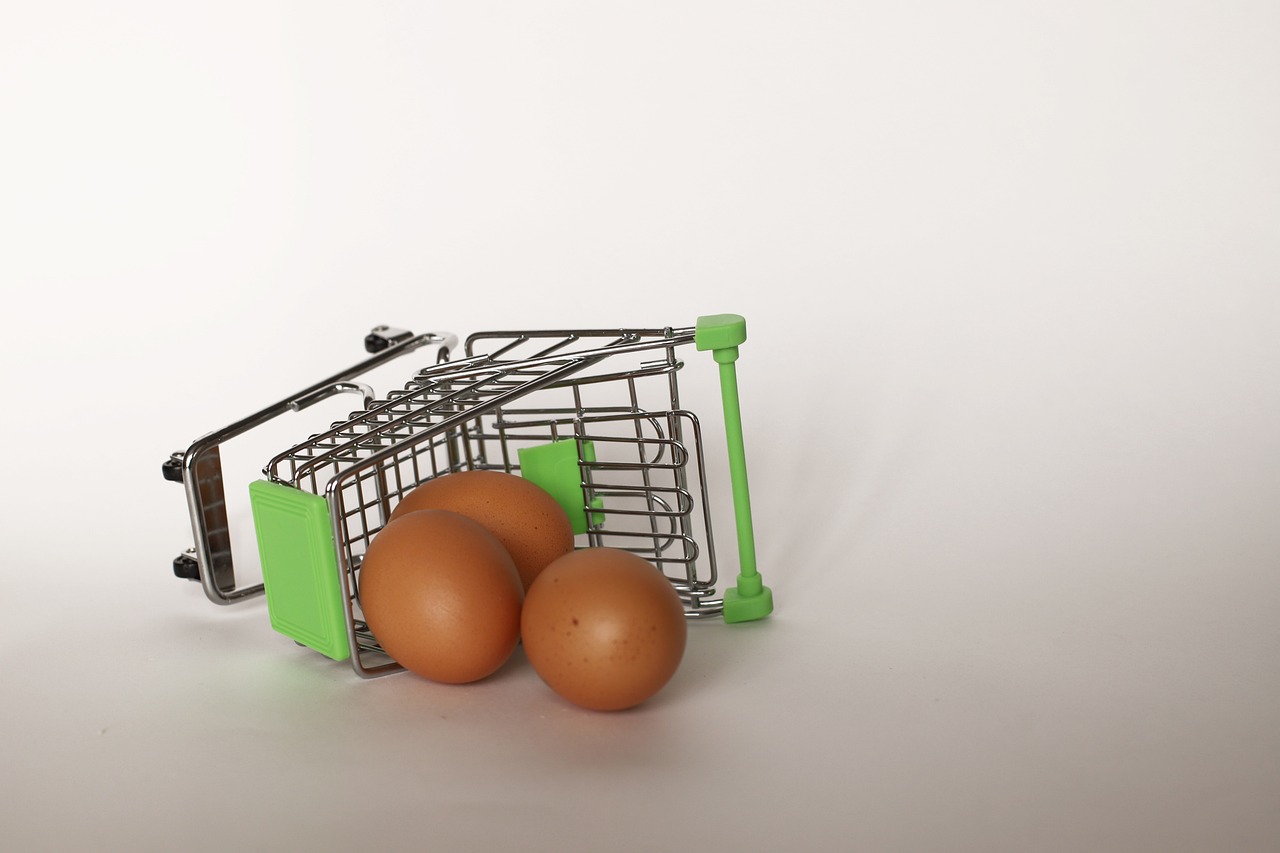
Understanding Secure Websites
When it comes to safe online shopping, understanding secure websites is your first line of defense. Imagine you're walking into a store; you wouldn't just enter any random shop without checking if it looks trustworthy, right? The same principle applies to online shopping. A secure website is typically indicated by a URL that begins with HTTPS rather than just HTTP. The 'S' stands for Secure, which means that the site uses encryption to protect the data you send and receive. This is crucial when you're entering sensitive information like credit card details or personal addresses.
To ensure you're on a secure site, look for a small padlock icon in the address bar of your web browser. This icon signals that the website has an SSL certificate, which encrypts your data during transmission. However, don't just take the padlock for granted; it's essential to check that the URL starts with HTTPS. Some malicious sites can create fake padlock icons, misleading you into thinking your information is safe.
Another important aspect to consider is the website's privacy policy. A trustworthy retailer will have a clear and accessible privacy policy that explains how they collect, use, and protect your personal information. If you can't find this information, or if it seems vague, it’s a red flag. Always opt for retailers that are transparent about their data handling practices.
Moreover, consider the following tips to assess a website's security:
- Check for contact information: A legitimate retailer will provide a physical address and customer service contact.
- Look for trust seals: Certifications from recognized organizations can provide an extra layer of confidence.
- Read the fine print: Understanding the terms and conditions can help you gauge the retailer's legitimacy.
In summary, recognizing secure websites is an essential skill for any online shopper. By paying attention to URLs, checking for SSL certificates, and understanding privacy policies, you can significantly reduce the risks associated with online transactions. Remember, a little vigilance goes a long way in keeping your personal information safe.

Choosing Trusted Retailers
When it comes to online shopping, not all retailers are created equal. With countless options available at your fingertips, it can be a challenge to determine which ones are trustworthy. You wouldn’t hand your credit card to just anyone on the street, right? The same caution should apply when you’re shopping online. So, how do you navigate this digital marketplace without falling into a trap? The first step is to do your homework. Research is key!
Start by looking for retailers that have a solid reputation. Check their website for contact information and customer service options. A trustworthy retailer will typically provide a physical address and a customer service phone number. If you can’t find this information, or if it looks suspicious, it’s best to steer clear. Additionally, look for trust seals or certifications on their site, which indicate that the retailer has met certain security standards.
Another effective way to gauge a retailer's reliability is by reading customer reviews. This can be a goldmine of information. However, not all reviews are created equal. It’s essential to evaluate them critically. Look for patterns in the feedback. Are customers consistently praising the quality of the products, or are there frequent complaints about shipping delays? Pay attention to both the positive and negative reviews to get a balanced perspective. In the end, a retailer with a mix of reviews might still be worth considering if they respond well to feedback.
In addition to direct reviews, consider using review aggregators. These platforms compile ratings and feedback from multiple sources, giving you a more comprehensive view of a retailer's reputation. Websites like Trustpilot or SiteJabber can be incredibly helpful in this regard. By gathering insights from various customers, you can better assess whether a retailer is worth your time and money.
Lastly, don’t forget to check for return policies and customer satisfaction guarantees. A reputable retailer will offer clear and fair return policies, allowing you to shop with peace of mind. If a retailer is hesitant to provide this information or has an overly complicated return process, it’s a red flag. Remember, online shopping should be a convenient and safe experience, not a gamble!
Q: How can I confirm if a retailer is legitimate?
A: Look for contact information, trust seals, and read customer reviews. A legitimate retailer will have a clear and accessible way for you to reach them.
Q: What should I do if I encounter a suspicious website?
A: If a website seems suspicious, it’s best to avoid making any purchases. Look for reviews or search for any complaints about the site before proceeding.
Q: Are all online reviews trustworthy?
A: No, not all reviews are genuine. Look for detailed reviews and check for patterns. Use review aggregators to get a more balanced view.
Q: What should I check in a retailer's return policy?
A: Ensure that the return policy is clear, fair, and allows you to return items within a reasonable timeframe. A good policy should also outline the process for returns.
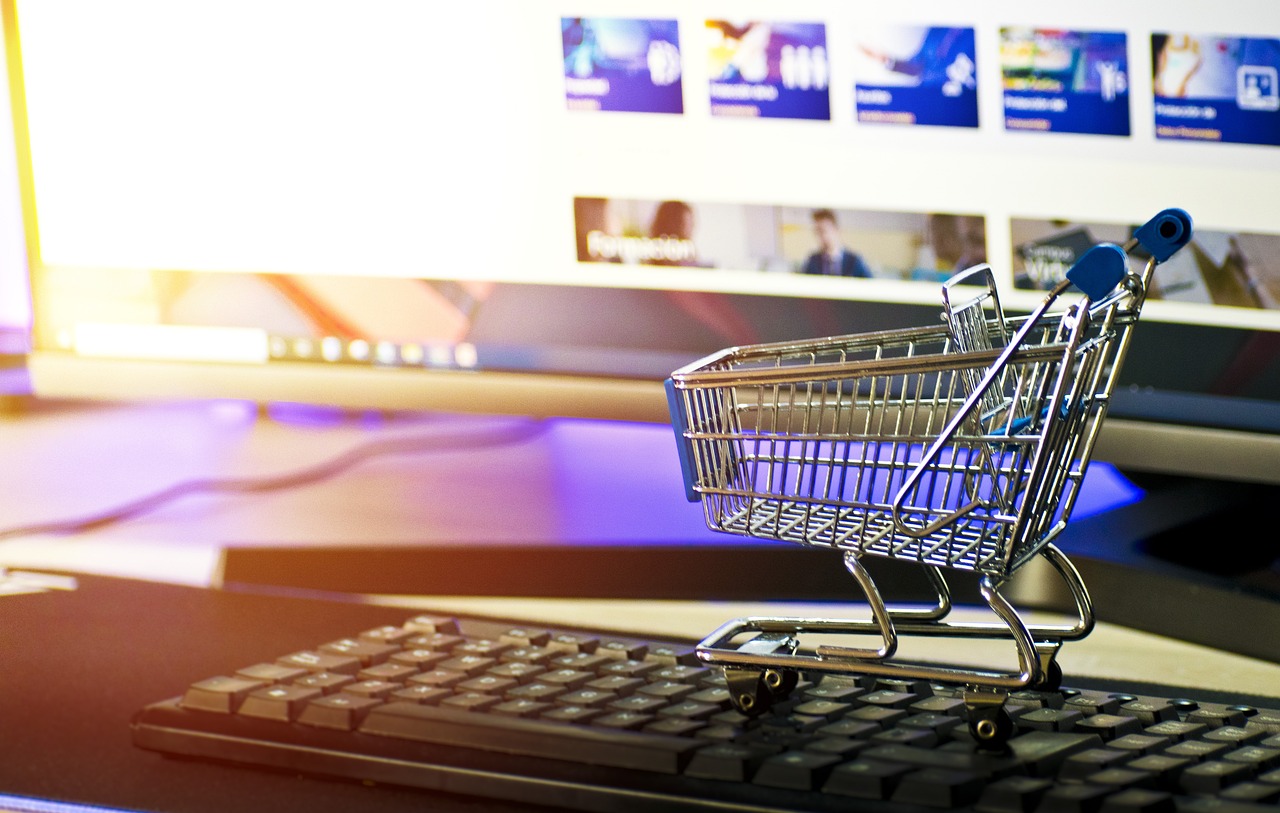
Reading Customer Reviews
When it comes to online shopping, is like having a personal shopping assistant who knows all the ins and outs of a retailer. These reviews can provide you with invaluable insights into the quality of products, the reliability of the retailer, and the overall shopping experience. But how do you sift through the countless reviews to find the nuggets of wisdom hidden among the noise? Well, it’s not as daunting as it seems!
First off, look for patterns in the reviews. If you notice that multiple customers are raving about a specific product feature, it’s likely a strong indicator of its quality. Conversely, if several reviews mention the same issue—like poor customer service or delayed shipping—it's a red flag. Remember, a single negative review shouldn’t necessarily dissuade you from a purchase, but a consistent trend should definitely raise your eyebrows.
Additionally, consider the source of the reviews. Are they from verified purchasers? Many websites now have systems in place to ensure that reviews come from actual buyers. This can add a layer of credibility to the feedback you’re reading. If you come across reviews that seem overly enthusiastic or suspiciously vague, they might be fake reviews designed to mislead you into making a purchase.
To further enhance your review-reading skills, here are some tips to keep in mind:
- Look for detailed reviews: Reviews that provide specific details about the product's performance are usually more trustworthy than vague comments.
- Check the date: Recent reviews are more relevant than older ones, especially for products that may have undergone changes or improvements.
- Evaluate the reviewer: If a reviewer has a history of posting reviews for various products, it can lend credibility to their insights.
Lastly, don’t forget to balance the reviews with your own research. While customer feedback is essential, combining it with product specifications and professional reviews can give you a well-rounded understanding of what you’re considering buying. Think of it as piecing together a puzzle; each review adds a piece that helps you see the complete picture.
Q: How do I know if a review is genuine?
A: Look for detailed, specific feedback and check if the reviewer has a history of posting credible reviews. Verified purchase tags can also help.
Q: Should I trust reviews on the retailer's website?
A: While many retailers have measures to ensure genuine reviews, it’s wise to cross-check with third-party review sites for a broader perspective.
Q: What if I find conflicting reviews for the same product?
A: Conflicting reviews are common. Focus on the overall trends and patterns rather than individual opinions. Look for consistent themes in the feedback.
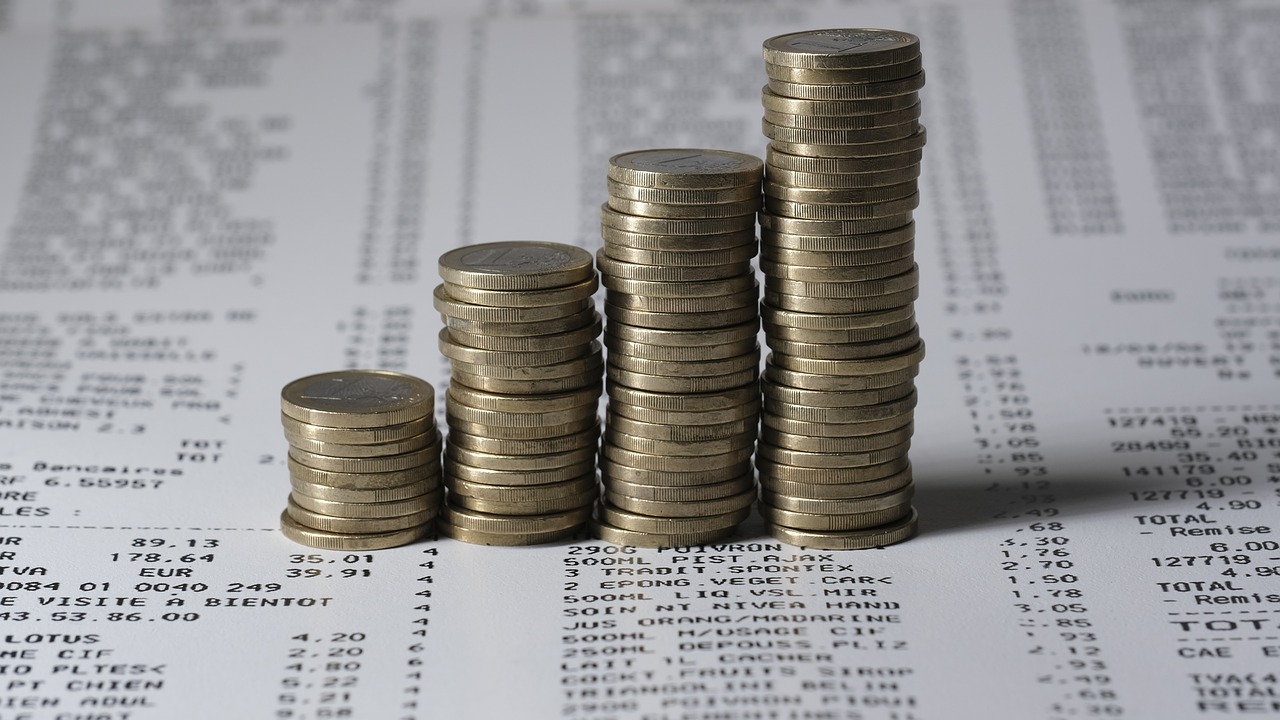
Identifying Fake Reviews
In the vast ocean of online shopping, customer reviews can serve as your lighthouse, guiding you towards trustworthy retailers. However, not all reviews are created equal, and distinguishing between genuine feedback and fake reviews can be a daunting task. So, how do you sift through the noise to find the truth? Here are some key indicators to help you identify fake reviews and ensure that you're making informed decisions.
First and foremost, look for overly positive or negative language. If a review seems excessively glowing or harsh, it might be a red flag. Authentic reviews typically express a range of emotions and experiences, highlighting both pros and cons. For instance, a genuine reviewer might say, "I loved the quality of the product, but the shipping took longer than expected." On the other hand, a fake review might simply exclaim, "This is the best product ever! Buy it now!" without providing any substantial evidence or detail.
Another important factor to consider is the reviewer's profile. If a reviewer has only posted one review or has a suspiciously high number of reviews in a short time frame, it could indicate that the reviews are not legitimate. Often, fake reviews come from accounts created solely for the purpose of promoting a product or brand. Take a moment to click on the reviewer’s profile and assess their activity. Are they reviewing a variety of products, or do they only seem to endorse one specific brand?
Additionally, pay attention to the timing of the reviews. If you notice a sudden spike in positive reviews around the same date, it may suggest that the retailer is attempting to manipulate their ratings. Genuine reviews are typically spread out over time, reflecting a more organic customer experience. A good practice is to check the review dates and see if they correlate with any promotional events or product launches.
Lastly, consider using review aggregator websites to cross-reference feedback. These platforms compile reviews from multiple sources, giving you a broader perspective on a retailer's reputation. If a product has overwhelmingly positive reviews on one site but mixed feedback on another, it might be worth digging deeper. This can help you identify patterns and discern whether the reviews are trustworthy.
In summary, while customer reviews can be an invaluable resource in your online shopping journey, it's essential to approach them with a critical eye. By being vigilant and employing these strategies, you can better navigate the murky waters of online feedback and make smarter purchasing decisions.
- How can I tell if a review is fake? Look for overly positive or negative language, check the reviewer's profile for authenticity, and consider the timing of the reviews.
- Are review aggregator websites reliable? Yes, they compile feedback from various sources, providing a more comprehensive view of a retailer's reputation.
- What should I do if I suspect a review is fake? Report it to the platform where you found it, and consider looking for additional reviews from other sources.

Utilizing Review Aggregators
When it comes to online shopping, gathering information about a retailer can feel like trying to find a needle in a haystack. This is where review aggregators come into play, acting like your personal shopping assistants in the vast world of e-commerce. These platforms collect customer feedback from various sources, making it easier for you to get a comprehensive view of a retailer's reputation without having to scour the internet for hours. Think of them as a one-stop shop for opinions, helping you make informed decisions before you hit that "buy" button.
One of the most significant advantages of using review aggregators is the sheer volume of feedback they compile. Instead of relying on a handful of reviews on a retailer's website, you can access a multitude of opinions that reflect a broader customer experience. This not only enhances your understanding of the retailer but also gives you a more balanced perspective. However, it's essential to approach these reviews with a discerning eye. Not all reviews are created equal, and some may be biased or manipulated.
Here are a few popular review aggregator platforms you might consider:
- Trustpilot: Known for its extensive database of customer reviews, Trustpilot allows users to rate businesses based on their experiences, giving you a clear picture of a retailer's reliability.
- SiteJabber: This platform focuses on helping consumers find trustworthy online businesses by providing user-generated reviews and ratings.
- Google Reviews: Often overlooked, Google Reviews can provide insights from local customers and help you gauge the overall reputation of a retailer.
While utilizing these platforms, keep in mind that the context of the reviews matters. Look for patterns in the feedback—if multiple users mention similar issues, it's worth taking note. For instance, if you see complaints about slow shipping or poor customer service, these red flags should caution you before making a purchase. Conversely, a wave of positive reviews highlighting excellent product quality and customer service can boost your confidence in a retailer.
In addition to reading reviews, consider checking the overall rating of the retailer. Most aggregators provide a star rating system, which can quickly give you a snapshot of customer satisfaction. However, don’t stop there! Dive deeper into the comments to understand the nuances of each review. This approach can help you identify whether the positive feedback is genuine or just a product of clever marketing.
Lastly, remember that while review aggregators are incredibly helpful, they should be just one part of your research toolkit. Combine the insights you gain from these platforms with other methods, such as checking the retailer's social media presence or looking for certifications and awards. By doing so, you’ll arm yourself with a wealth of information that will make your online shopping experience not only safer but also more enjoyable.
Q: What are review aggregators?
A: Review aggregators are platforms that collect and display customer feedback from various sources, providing a consolidated view of a retailer's reputation.
Q: How can I tell if a review is genuine?
A: Look for detailed reviews that share specific experiences, and be cautious of overly positive or vague comments that may seem scripted.
Q: Should I rely solely on review aggregators for my shopping decisions?
A: No, while they are valuable resources, it's best to combine insights from review aggregators with other research methods for a well-rounded understanding.
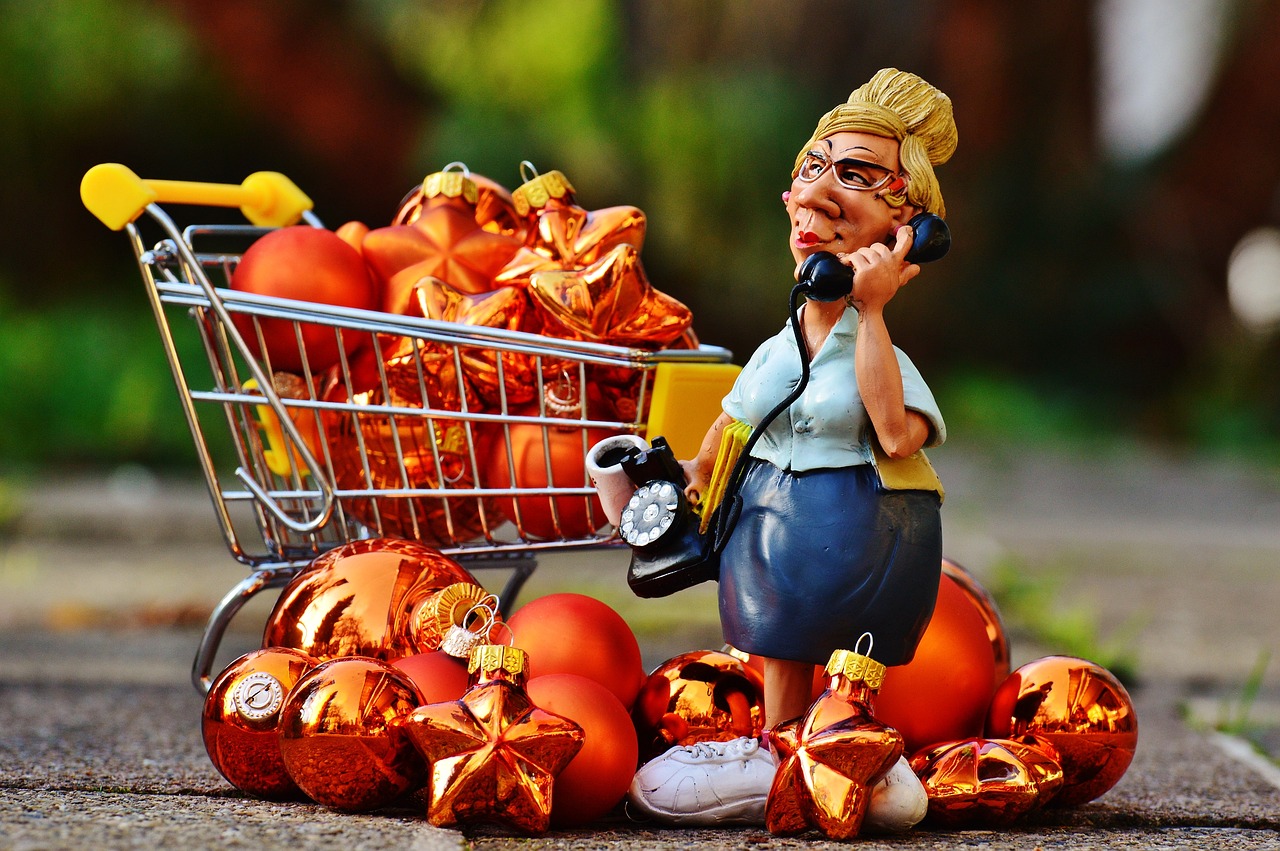
Payment Security Measures
When it comes to online shopping, payment security is paramount. You wouldn't hand your credit card to a stranger on the street, right? So why would you do it online without taking precautions? Understanding the various payment methods available is crucial for ensuring that your sensitive information remains safe during transactions. Let’s dive into some of the most secure payment options and what makes them reliable.
First up, we have credit cards. They are not only widely accepted but also offer robust fraud protection. Most credit card companies provide a feature called chargeback, which allows you to dispute unauthorized charges. This means that if someone gets hold of your card details, you can report it and potentially get your money back. However, it’s essential to choose a credit card that has strong security features, such as two-factor authentication and transaction alerts.
Next, there are digital wallets like PayPal, Apple Pay, and Google Pay. These services act as intermediaries, meaning your credit card or bank details are never directly shared with the retailer. Instead, you link your bank account or card to the wallet, and when you make a purchase, only the wallet information is transmitted. This reduces the risk of your payment information being intercepted by hackers.
Another option is using cryptocurrency for online purchases. While it may sound a bit futuristic, cryptocurrencies like Bitcoin offer a level of anonymity and security that traditional payment methods can't. Transactions are encrypted and recorded on a blockchain, making it nearly impossible for anyone to tamper with your payment details. However, keep in mind that not all retailers accept cryptocurrency yet, so it's essential to check before you get too excited.
To summarize, here are the key points to consider when choosing a payment method:
- Credit Cards: Look for those with chargeback options and security features.
- Digital Wallets: Use services that keep your payment details private.
- Cryptocurrency: Offers anonymity and security, but check retailer acceptance.
Moreover, always look for secure payment gateways when checking out. A secure payment gateway will have SSL (Secure Socket Layer) certification, which encrypts your data during transmission. You can identify a secure site by looking for a tiny padlock icon in the address bar or checking that the URL starts with HTTPS instead of just HTTP.
Lastly, keep an eye on your financial statements. Regularly monitoring your bank statements can help you catch any unauthorized transactions early on. If you notice anything suspicious, report it to your bank immediately. Remember, being proactive is your best defense against fraud.
Q: What is the safest payment method for online shopping?
A: Credit cards and digital wallets are generally considered the safest options due to their fraud protection features.
Q: How can I tell if a website is secure?
A: Look for the padlock icon in the address bar and ensure the URL starts with HTTPS.
Q: Should I use public Wi-Fi for online shopping?
A: It's best to avoid public Wi-Fi for transactions. If you must use it, consider using a VPN for added security.
Q: What should I do if I suspect fraud on my account?
A: Contact your bank immediately to report the suspicious activity and take necessary steps to secure your account.
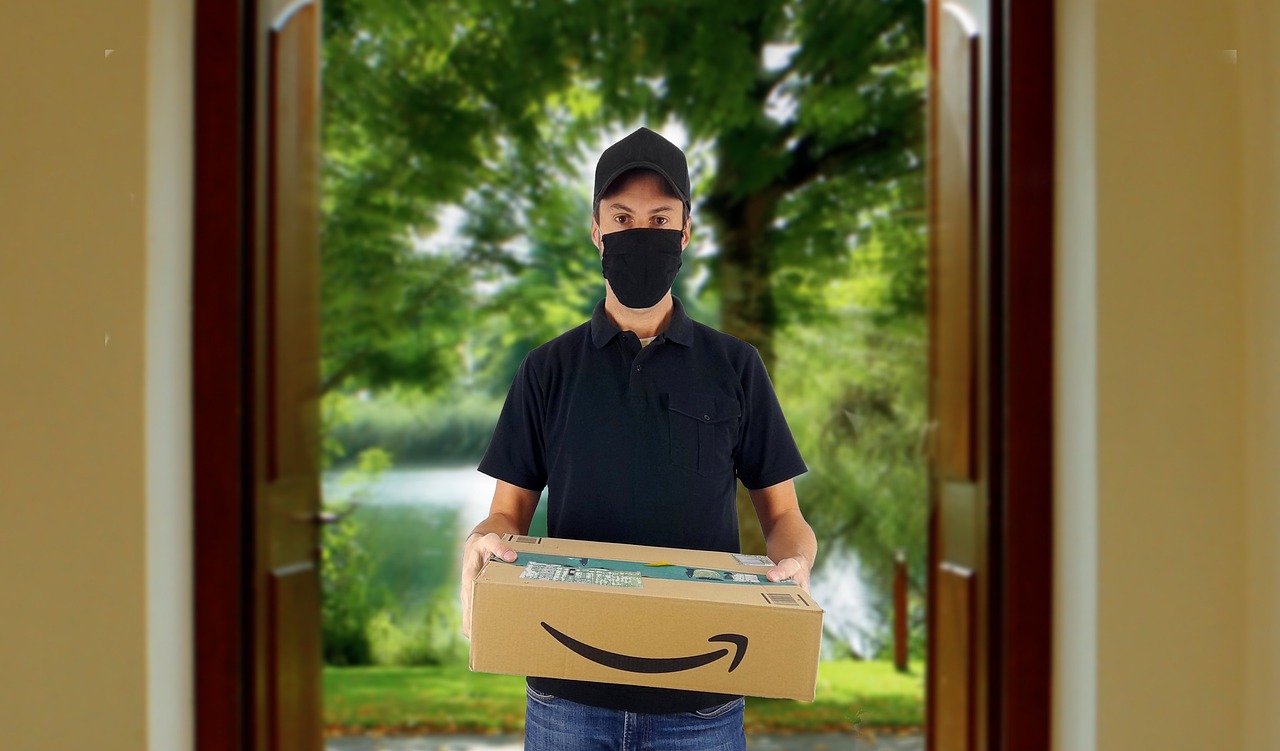
Protecting Personal Information
In today's digital age, protecting your personal information while shopping online is not just a good idea—it's absolutely essential. With the increasing number of cyber threats and data breaches, you have to be proactive in safeguarding your sensitive data. Think of your personal information as a treasure chest; you wouldn't leave it unlocked in a public space, would you? The same principle applies to your online presence. So, how can you keep that treasure safe? Let's dive into some essential strategies.
First and foremost, one of the simplest yet most effective ways to protect your data is by using strong passwords. A strong password is like a sturdy lock on your treasure chest. It should be at least 12 characters long and include a mix of uppercase letters, lowercase letters, numbers, and special symbols. Avoid using easily guessable information, such as your birthday or name. Instead, consider using a password manager to generate and store complex passwords securely. This way, you won't have to remember every single password, and your accounts will be much safer.
Another critical aspect of protecting your personal information is to avoid using public Wi-Fi networks for online shopping. Public Wi-Fi may seem convenient, but it's often a hacker's playground. Imagine sending your credit card details through a crowded café's Wi-Fi; it’s like shouting your secrets in a room full of strangers! If you must use public Wi-Fi, ensure you have a reliable Virtual Private Network (VPN) to encrypt your data. A VPN acts like a secure tunnel for your information, making it much harder for cybercriminals to intercept your online activities.
Speaking of VPNs, setting one up is easier than you might think. Most reputable VPN services offer user-friendly apps that you can install on your devices in just a few clicks. Once activated, your internet connection is encrypted, and your IP address is masked, giving you an added layer of security while browsing and shopping online.
Now, let’s not forget about the importance of regularly monitoring your bank statements. This practice is crucial for detecting any unauthorized transactions early on. Think of it as regularly checking the locks on your treasure chest. By keeping an eye on your finances, you can spot any suspicious activity and take action before it spirals out of control. Set aside a few minutes each week to review your statements, and don’t hesitate to contact your bank if you notice anything unusual.
Lastly, always be cautious about the information you share online. Not every retailer needs your full address or phone number for a simple purchase. When filling out forms, only provide the necessary information. If a site asks for more than what seems reasonable, it’s a red flag. Remember, in the world of online shopping, less is often more when it comes to personal data.
In conclusion, protecting your personal information while shopping online is a multifaceted approach that includes using strong passwords, avoiding public Wi-Fi, utilizing VPNs, monitoring your bank statements, and being cautious about the information you share. By implementing these strategies, you can enjoy a safer online shopping experience and keep your treasure chest secure!
- What is a strong password? A strong password is at least 12 characters long and includes a mix of uppercase letters, lowercase letters, numbers, and special symbols.
- Why should I avoid public Wi-Fi for shopping? Public Wi-Fi networks are often unsecured and can be easily accessed by hackers, making your personal information vulnerable.
- How does a VPN protect my information? A VPN encrypts your internet connection, making it difficult for cybercriminals to intercept your data while you browse or shop online.
- How often should I check my bank statements? It's advisable to check your bank statements at least once a week to catch any unauthorized transactions early.

Using Virtual Private Networks (VPNs)
In today's digital world, where online shopping has become a norm, ensuring your safety while browsing is more critical than ever. One of the most effective tools at your disposal is a Virtual Private Network (VPN). Think of a VPN as your personal bodyguard in the vast online marketplace. It creates a secure tunnel through which your internet traffic flows, effectively shielding your data from prying eyes. But how does it work, and why should you consider using one for your online shopping adventures?
When you connect to a VPN, your internet connection is encrypted, meaning that any data you send or receive is scrambled and unreadable to anyone who might intercept it. This is especially important when you're entering sensitive information, such as credit card details or personal addresses. Without a VPN, your data could be vulnerable to hackers, especially on unsecured networks like public Wi-Fi in cafes or airports. Imagine sending a postcard with your personal information written on it – that’s what using public Wi-Fi without a VPN is like!
Setting up a VPN is generally straightforward. Most reputable VPN services offer user-friendly applications that can be installed on various devices, including smartphones, tablets, and computers. Once installed, you simply select a server location and connect. Here’s a quick breakdown of the steps:
- Choose a reputable VPN provider: Look for one with a solid track record of security and customer support.
- Install the VPN application: Follow the provider's instructions to download and install the software on your device.
- Connect to the VPN: Select a server and connect. You’ll often have options for different countries, which can also help you access region-locked content.
Once connected, your online activities are much safer. However, it’s essential to remember that while a VPN significantly enhances your security, it’s not a catch-all solution. You should still practice other safety measures, such as using strong, unique passwords and enabling two-factor authentication wherever possible. Think of a VPN as a sturdy lock on your door, but you should also make sure that the windows are secure!
Moreover, depending on your VPN provider, you may also experience benefits such as faster browsing speeds and access to geo-restricted content. For instance, if you want to shop on a website that only serves specific regions, connecting to a server in that region might allow you to browse and purchase items that would otherwise be unavailable to you. It's like having a VIP pass to exclusive online sales!
In conclusion, using a VPN while shopping online is a smart move to protect your personal information and enhance your overall shopping experience. With a VPN in your toolkit, you can shop with confidence, knowing that your data is being safeguarded. So, why take chances? Equip yourself with a VPN, and enjoy a safer online shopping journey!
- What is a VPN? A VPN, or Virtual Private Network, is a service that encrypts your internet connection to protect your privacy online.
- Do I need a VPN for online shopping? While not mandatory, using a VPN adds an extra layer of security, especially when shopping on public Wi-Fi.
- Can I use a free VPN? Free VPNs can be less secure and may sell your data. It's generally safer to invest in a reputable paid VPN service.
- Will a VPN slow down my internet speed? Some VPNs may slightly reduce your speed due to encryption, but many premium services offer fast connections.

Monitoring Bank Statements
When it comes to online shopping, one of the most crucial steps you can take to protect your financial health is monitoring your bank statements regularly. Imagine your bank statement as a detailed report card for your finances; it highlights your spending habits, income, and any irregularities that may arise. By keeping a close eye on these statements, you can quickly spot any unauthorized transactions or discrepancies that could indicate fraudulent activity.
It’s easy to get caught up in the excitement of online shopping, but taking a moment to review your bank statements can save you from potential headaches down the line. Set aside a few minutes each week or month to go through your statements. Look for anything that seems out of place, such as charges you don’t recognize or payments that seem higher than expected. If you notice anything suspicious, it’s vital to take action immediately. Contact your bank to dispute the charge and protect your account.
To make this process easier, consider the following tips:
- Use Online Banking Tools: Most banks offer online banking services that allow you to track your transactions in real-time. Take advantage of these tools to keep tabs on your spending.
- Set Up Alerts: Many banks provide options to set up alerts for transactions above a certain amount. This can help you catch unauthorized charges as soon as they occur.
- Keep Receipts: Always save your receipts or confirmation emails from online purchases. This will make it easier to verify the charges on your bank statement.
Additionally, consider creating a simple table to track your transactions. This can help you visualize your spending and identify patterns over time. Here’s a sample layout you might use:
| Date | Description | Amount | Status |
|---|---|---|---|
| 01/15/2023 | Online Retailer A | $45.00 | Paid |
| 01/20/2023 | Online Retailer B | $30.00 | Pending |
| 01/25/2023 | Online Retailer C | $20.00 | Paid |
By actively monitoring your bank statements, you not only safeguard your finances but also gain a better understanding of your spending habits. This knowledge can empower you to make smarter financial decisions in the future. Remember, being proactive is key in the digital shopping world, and your bank statements are a powerful tool in your arsenal for maintaining financial security.
Q: How often should I check my bank statements?
A: It’s a good practice to check your bank statements at least once a month, but weekly checks can help you catch any suspicious activity sooner.
Q: What should I do if I find an unauthorized transaction?
A: Contact your bank immediately to report the unauthorized transaction. They will guide you through the process of disputing the charge and securing your account.
Q: Can I set up alerts for my bank transactions?
A: Yes, most banks offer the option to set up transaction alerts via email or text message. This can help you stay informed about your account activity.
Q: Is it safe to shop online?
A: Yes, shopping online can be safe if you follow best practices, such as using secure websites and monitoring your bank statements regularly.
Frequently Asked Questions
- What should I look for in a secure website?
When shopping online, check for HTTPS in the URL, which indicates a secure connection. You can also look for a padlock icon in the address bar, signaling that the site encrypts your data. Always avoid sites that don’t have these features, as they may compromise your personal information.
- How can I identify trusted online retailers?
To find reputable online retailers, research their reviews and ratings on platforms like Google or Trustpilot. Look for retailers with a solid track record and positive feedback from previous customers. Don’t just take the retailer’s word for it—real customer experiences can provide valuable insights.
- Are customer reviews always reliable?
Not necessarily! While customer reviews can be helpful, it’s crucial to differentiate between genuine and fake reviews. Look for detailed reviews that mention specific experiences rather than generic praise. If a review seems too good to be true or overly negative, it may be suspicious.
- What payment methods are the safest for online shopping?
Using a credit card is often the safest option for online purchases, as they usually offer better fraud protection compared to debit cards. Additionally, consider using payment services like PayPal or virtual cards, which provide an extra layer of security by keeping your financial information private.
- How can I protect my personal information while shopping online?
To safeguard your personal data, use strong, unique passwords for each account and consider enabling two-factor authentication. Avoid using public Wi-Fi for transactions, as these networks can be less secure. If you must use public Wi-Fi, a VPN can help encrypt your connection.
- What is a VPN and how does it help with online shopping?
A Virtual Private Network (VPN) creates a secure connection over the internet, encrypting your data and masking your IP address. This helps protect your personal information from potential hackers, especially when you're shopping on public Wi-Fi networks.
- Why is it important to monitor my bank statements?
Regularly checking your bank statements is essential to catch any unauthorized transactions early. If you notice any suspicious activity, you can report it to your bank immediately, potentially preventing further losses. Staying vigilant helps you maintain your financial security.



















